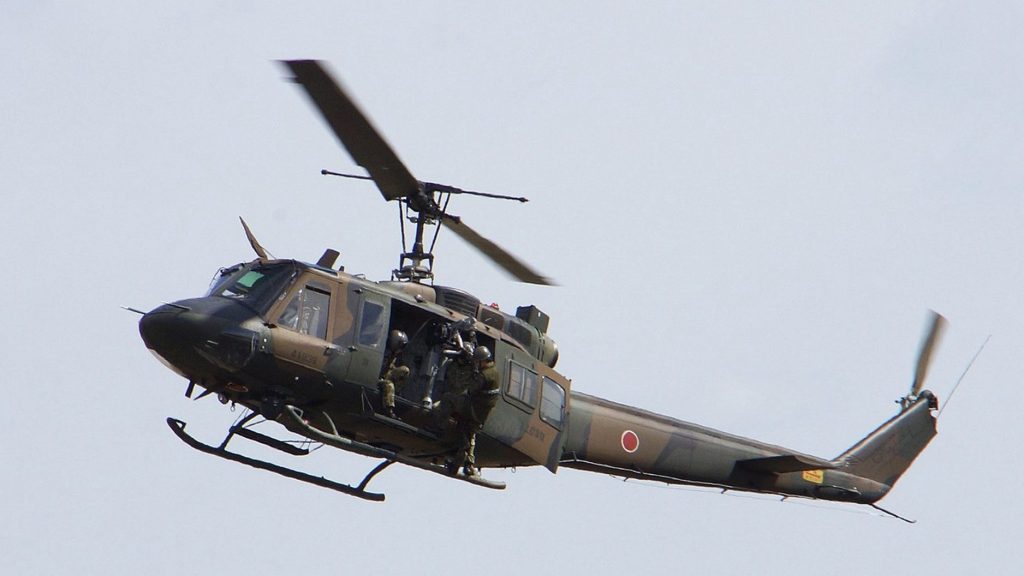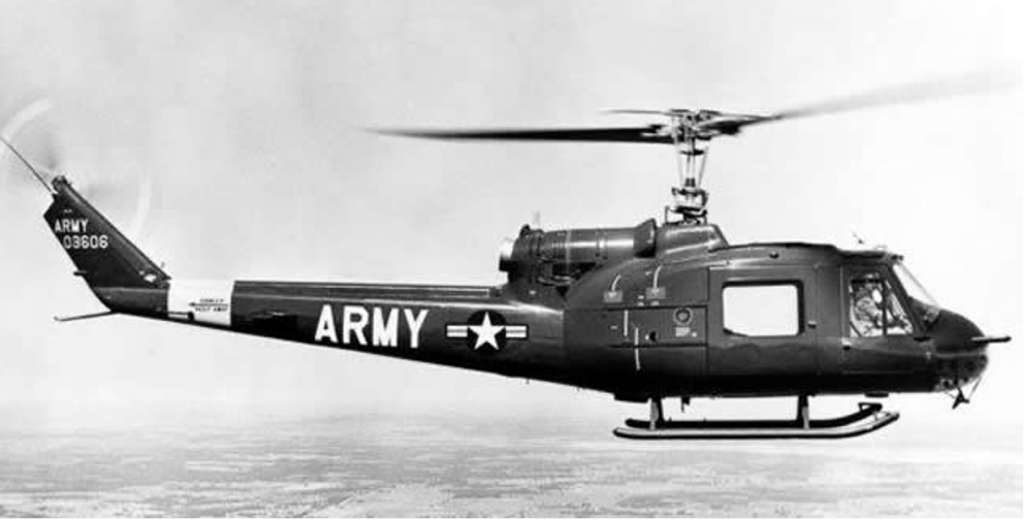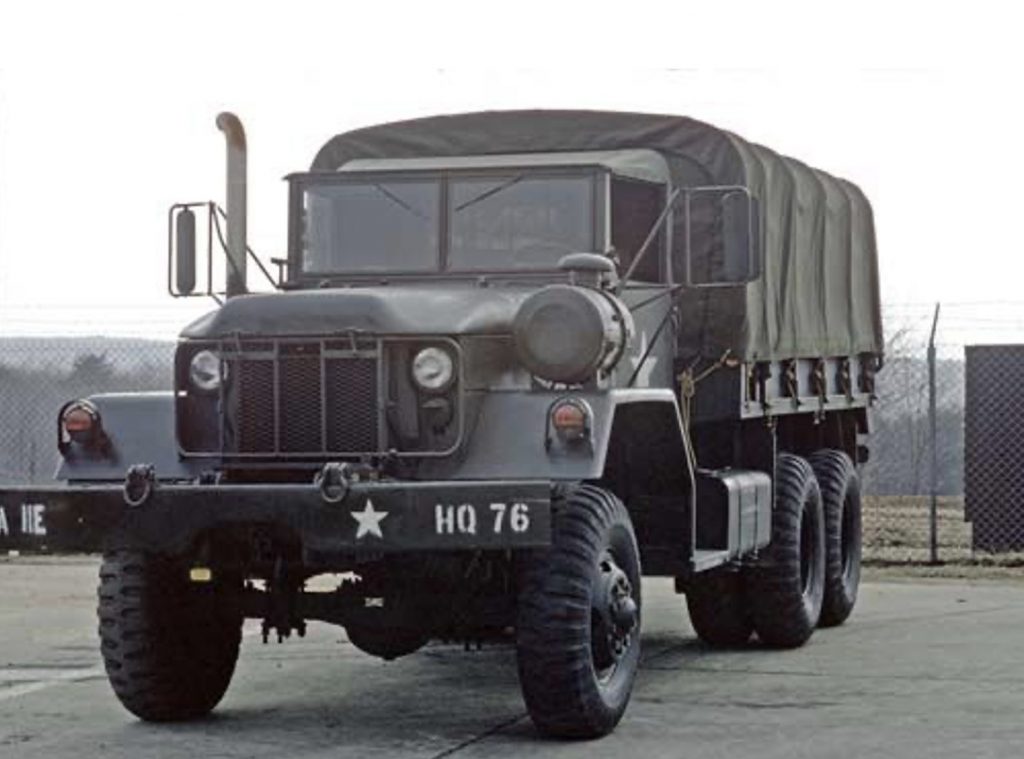The “Tales from Nick’s FARRP” series are a fictionalized version of real events and are dedicated to the memory of friends and classmates from the Class of 1969.
“So, Tony, were there any funny or crazy things you remember from Vietnam?”
* * * * * *
I was talking to my beer-drinking customer Tony, known to the Army as Major Williams, sitting on a stool on the other side of the bar from me in “Nick’s FARRP.” That was a drinking establishment for Army guys in Fayetteville, North Carolina, just outside Fort Bragg, that my Uncle Nick left me when he died. Some chemical he was exposed to during his three tours in Vietnam as a helicopter pilot, or as they like to call themselves, “aviator,” gave him cancers that he eventually died from.
I know nothing about the Army, so I am always asking the guys in here questions. My name, by the way, is Gil Edwards.
* * * * * *
“Well, Gil,” Major Tony replied, “anyone who ever served in any of the military services can tell you about the crazy and funny things that happened during their time in. Most of the stories you hear these guys here talking about are the crazy things that happened to them. So, yeah, I suppose you could say I have some stories.
“Silliest thing I remember from Vietnam was in late summer of 1972, when three Special Forces guys in a jeep turned up at our aviation field. They had heard that there was a former Green Beret, now an aviator in the 60th Assault Helicopter Company at Ninh Hoa. Our airfield was located along the South China Sea in central Vietnam, some twenty miles or so north of Nha Trang, so they wanted to look me up.
“They had a proposition for me. It seems that they had a “perfectly good” Bravo-model Huey helicopter they wanted to trade to us for eight cases of steaks.”
“Are you kidding me?” exclaimed the guy sitting next to him, a short younger soldier I knew as Captain Kenny. “They wanted to give you an operational helicopter, in trade for eight cases of steaks? How much does a helicopter like that cost anyway?”
“That, my young friend, is a question I can answer,” replied the stout older Army guy on the other side of Major Tony. I knew him as Chief Warrant Officer Rod Jordan, a long-time Army master aviator who had been best friends with my late Uncle Nick. He had been flying Army helicopters for nearly twenty years, since they had graduated flight school in 1962 and gone to Vietnam for their first flying tours.
“A Huey helicopter, regardless of the model or year delivered to the Army, cost $238,000. When the first operational B-models began deliveries in 1962, Bell Helicopters negotiated a fixed price with the Army. Later on, as the Huey models got bigger, more advanced and more powerful, the Army insisted that the fixed price of $238,000 each remain in place.
“Over the years, the B-models got supplemented with Charlie-model gunships, and later D-model troop carriers. The helicopter war in Vietnam kept on growing, and Bell couldn’t deliver new models of Hueys fast enough. The Marine Corps got in the act, buying E-models, so the Air Force had to get their F-models as well. In the later years of the war, the extended-cabin more powerful H-models became the mainstay in Vietnam, but always the price remained exactly the same.”
“Hey, Miss Peggy, bring me another beer if you would,” Chief Rod interrupted himself, before continuing. Miss Peggy is my bar manager and mentor, the widow of Uncle Nick and Rod’s life-long buddy, Miguel.
“Through 1972, Bell Helicopters delivered over 13,000 Hueys of various models to all the military services, always for the same flat price. Lady Bird Johnson, who was the primary shareholder in Bell Helicopters, got really rich off the Vietnam war. So did lots of politicians. But I guess that’s how it has been since time began.”
Captain Kenny looked puzzled. “So then, why did these Special Forces guys want to trade a Huey for eight cases of steaks? There must be some story that goes with that.”
“As a matter of fact, there was. Back around 1966, a Special Forces sergeant from a Green Beret A-team in the Central Highlands of Vietnam got approved to go to helicopter flight school as a Warrant Officer Candidate. He went all the way through the program, but two weeks before graduation, there was a scandal at Fort Rucker over a colonel’s daughter, and he was bounced out of the class and straight back to Vietnam.
“Eventually his Special Forces A-team learned of a B-model Huey that had been written off the Army’s property books as a combat loss, just because some aviation unit didn’t want it anymore. Knowing how to fly, this sergeant went out and flew the Huey back to the team camp in the Central Highlands. It became the private helicopter of the Green Berets for the next year and a half. He flew it into the refueling points throughout central Vietnam, topping it off with jet fuel and keeping the oil levels up.
“In 1970 the sergeant was rotated back stateside to Smoke Bomb Hill at Fort Bragg, so the helicopter just sat there abandoned for two years. In all the time it had been flying, the sergeant had never kept track of the flight hours he put on the bird, and no maintenance had ever been performed. There were no maintenance records at all for the helicopter.
“The deal the Green Berets were offering us was this: They were all being rotated back to Fort Bragg and wanted to throw a party for the Montagnard villagers they had supported and fought with for all those years. For eight cases of steaks the helicopter was ours. All we had to do was fly it out. But with no flight records and no maintenance ever having been performed, there wasn’t a single aviator in our company, not even that crazy AMOC warrant officer I told you about earlier (https://thedaysforward.com/amoc-1978/), who would dare even crank it up. As far as I know, it is probably still sitting there, waiting for someone brave enough to try to fly it.”
“Wow,” I responded to Major Tony’s story. “Tell me another story from Vietnam.”
“For the price of another beer, Gil, I will be glad to.” As I drew him a fresh beer, Tony continued entertaining all of us at the bar.
“In February 1972, an AH-1G Cobra from my unit, callsign Gun Runners, had finished its mission and was heading back to our airfield, when the Aircraft Commander (AC) decided to have some fun. QL-1 is the main Vietnamese national highway that runs along the South China Sea coastline from Saigon to Hanoi. The AC and his front-seat copilot were zipping along low-level on QL-1 at 120 kts about five feet above the road. They were flying south between Qui Nhon and Tuy Hoa, having fun honking around the turns and up and down the hills, just barely off the pavement.
“Cresting a small hill, they were surprised by a 5-ton cargo truck rumbling north, which scared the crap out of both the aviators and the truck crew. The AC yanked his Cobra up, but not before the truck driver and his assistant saw helicopter skids slam right around their heads.
When the Cobra hooked its skids through the canvas bows on the truck, the impact ripped the entire skid assembly off the bottom of the gunship. The shocked truck driver and his assistant found themselves still driving in the truck cab, surrounded by the framework of the Cobra skid assembly. I have no idea what the story was they told when they got back to Qui Nhon.
“Lacking any landing gear, the Aircraft Commander radioed ahead to our base that he wouldn’t be able to land the bird. The airfield commander rounded up every spare man to come down to the flight line and start filling sandbags. While the Aircraft Commander held the gunship at a two-foot hover, they built a sandbag cradle the length and width of the Cobra belly, being extra careful to stay clear of the tail rotor. That tail rotor works like an 1,100 horsepower vertical weed eater, which can turn a man into a pink cloud in an instant.
“Once the troops had built the sandbag sidewalls up about three feet high for lateral stability, the Aircraft Commander was eventually able to set his bird in the makeshift sandbag revetment and shut it down. Since so many aviation units had stood down by that late in the war, it took two weeks to get a replacement Cobra skid assembly delivered in country.
“The million-dollar attack aircraft was saved, but that Aircraft Commander was never again allowed to fly in country. He spent the remainder of his tour filling out maintenance forms and records.”
“Yeah, Tony,” I responded, “but I want you to tell me a story about you. What was the craziest thing you personally experienced?”
“Well, I suppose that would be one afternoon in mid-1972, at the finish of a long day of ‘ash-and-trash,’ resupplying the companies in a Korean regiment of their Tiger Division. We were returning to our base after more than eight flying hours, after over 40 direct combat support sorties. It was …”
“Wait,” I interrupted. “What do those words mean?”
“Right, my young civilian friend,” Major Tony replied. “I forget you don’t understand all the Army jargon. ‘Direct combat support’ is the term for our missions flown to support the combat troops out in the field. DCS means we weren’t under enemy fire at the time, and we didn’t have Cobra gunships flying cover for us. But we were still in bad-guy country, flying over territory where we could take fire at any time.”
“All right, then.” I replied, “but what is ‘sorties?’”
“A sortie is one take-off and one landing of an aircraft on a combat mission. For an Air Force bomber or cargo crew, a sortie might last ten hours or longer. When we Army guys were flying single-helicopter ‘ash-and-trash’ missions bringing rations, water, ammo and mail to the troops in the field, a sortie could be ten minutes or less, just the time it took to fly from the regimental logistics pad up to a company of troops on a pinnacle and land to off-load their supplies. Then another sortie back to the pad, to pick up a load for another company.
“On a typical DCS day, we would do that all day long. We got really good at landing heavily loaded on mountain pinnacles in turbulence, and the troops were always glad to hear the famous Huey WOP-WOP-WOP as we were bringing them stuff they really wanted.
“So back to my story. As the Aircraft Commander, radio callsign Ghost Rider 8, in the left pilot’s seat, I was letting my new-guy co-pilot get some extra stick time flying us back. I decided it was time to light up the cigar I had been carrying in my pocket all day long.
“We were cruising home at 2,000 feet above the terrain, straight and level, with 80 knots of airspeed whipping through my left-side window. True story. As I put the cigar in my mouth and started to look for my lighter, out of nowhere a hand reached in through the open window, flicked a Zippo open and lit my cigar.”
“WOW!!” was the simultaneous exclamation from everyone at the bar listening to this story. “How on earth could that happen?”
Major Tony took a long sip of his beer, paused, then replied. “My crew chief, riding in the left rear well of the Huey, had seen me reaching for my cigar. So he unbuckled from his station, climbed outside the helicopter and walked forward balanced on the skid up to my window, and reached inside. He told me he just wanted to see the look on my face when he lit my cigar.”
Thanks to Zandy. In memory of Bill and Terry and Eddie and Jerry



Guy – Loved this new addition! Keep ’em coming!
Guy- Thanks for some great “war” stories. Reminds me of my father’s war story about an orphan heliccoper My dad was an O6 veteranarian first in DaNang in 1968 and then in Saigon in 1969. On of the first things he learned In Saigon was that jeeps are precious and are prone to disappear overnight. In fact, he had to order that his jeeps entire spark plug wiring assembly had to be removed every night to avoid losing the entire vehicle. One day, a sargeant came to Dad and admired his jeep. After a bit of polite conversation, the sargeant offered a Huey helicopter, still in the crate, in fair trade for the jeep. Dad turned him down, but years later admitted that he only did so because he did not know how to fly the damn thing.
Reminds me of the time my soldiers found a D-5 dozer at Long Binh that was on nobody’s books. I needed it. The depot cdr did not know what to do. To keep things on the somewhat straight, my maintenance NCO checked its serial number, filled out a requisition for the dozer, dropped off the requisition with the depot cdr, loaded it on a tilt trailer, and drove off.
Guy, loved your story. Best I can do is to tell you that I have a copilot’s door from a UH 1 in my backyard shed, that I found in a training area at Fort AP Hill.
Thanks Guy, I always find these entertaining.
Guy, you did it again! Thanks. BTW, since your stories are “fictionalized versions of real events” is their a real version of Nick’s FARRP? And if so, let’s plan on paying it a visit the next time I’m down in NC visiting my granddaughter.
Ray —
The FARRP is a composite of every O-Club bar I ever sat at, listening to and telling stories until late into the night. Every story is either one I heard or one I told [or could tell].
Fayetteville was selected as a locale where I could logically have all of the characters in one place: the aviators, the paratroopers, the Special Forces, the Rangers, the Cav guys, the enineers, the infantry, the Vietnam vets, the foreign area guys, and the intel guys. Because with one exception, I was all of those. The stories are mostly autobiographical.
Every character I picture in my mind is based on people I knew and served with, except Gil. He is an invention. That includes Miss Peggy, widow of a beloved classmate and roommate.
There are still a few more stories to tell, but they come slower now. Thanks for the comment.
— guy